-
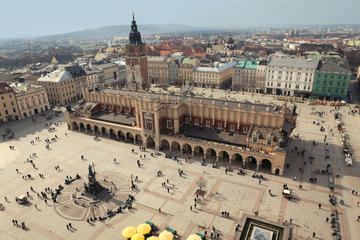 Krakow Old Town
Krakow Old Town The cobblestone Main Square (Rynek Główny) of Krakow Old Town is Central Europe’s largest and has been the center of the city’s social, religious and political life since the Middle Ages. Today it still serves as Krakow’s modern pulse, dominated by the splendid Renaissance arcades
Krakow Old Town
Krakow Old Town The cobblestone Main Square (Rynek Główny) of Krakow Old Town is Central Europe’s largest and has been the center of the city’s social, religious and political life since the Middle Ages. Today it still serves as Krakow’s modern pulse, dominated by the splendid Renaissance arcades
-
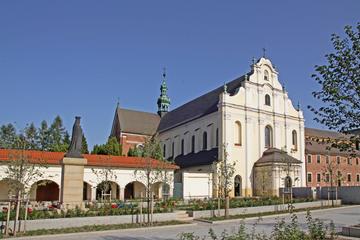 Nowa Huta
Nowa Huta Communist repression came to Poland in 1945 after the end of World War II and lasted until the collapse of the Iron Curtain in 1989. During this time, the suburb of Nowa Huta was constructed six miles (10 kilometers) east of Krakow’s center.Nowa Huta could not be more different from fair
Nowa Huta
Nowa Huta Communist repression came to Poland in 1945 after the end of World War II and lasted until the collapse of the Iron Curtain in 1989. During this time, the suburb of Nowa Huta was constructed six miles (10 kilometers) east of Krakow’s center.Nowa Huta could not be more different from fair
-
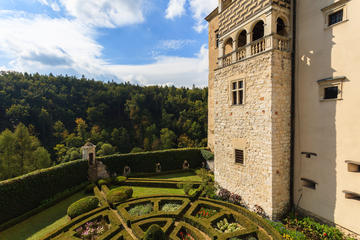 Pieskowa Skala Castle
Pieskowa Skala Castle One of only three castles in Poland that remain completely intact, the Renaissance Pieskowa Skała is on the Eagles’ Nest Trail, a scenic route that wends past medieval castles and watchtowers built as defense strongholds between Częstochowa and Krakow in Malopolska. Located i
Pieskowa Skala Castle
Pieskowa Skala Castle One of only three castles in Poland that remain completely intact, the Renaissance Pieskowa Skała is on the Eagles’ Nest Trail, a scenic route that wends past medieval castles and watchtowers built as defense strongholds between Częstochowa and Krakow in Malopolska. Located i
-
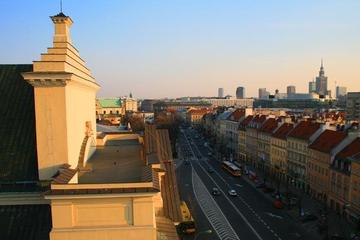 The Royal Way in Warsaw
The Royal Way in Warsaw Originally used as a communication route, Warsaws famous Royal Way (or Royal Route) is a beautiful, 2.5 mile-(4 km) long road that goes from the The Royal Palace at Old Town to the Wilanow Palace. Walking this road assures you an incredible view of Polish historical landmar
The Royal Way in Warsaw
The Royal Way in Warsaw Originally used as a communication route, Warsaws famous Royal Way (or Royal Route) is a beautiful, 2.5 mile-(4 km) long road that goes from the The Royal Palace at Old Town to the Wilanow Palace. Walking this road assures you an incredible view of Polish historical landmar
-
 St Johns Cathedral (Katedra Sw Jana)
St Johns Cathedral (Katedra Sw Jana) This stunning Gothic cathedral in the heart of Warsaws Old Town is one of the most interesting historical landmarks. Built in the 14th century, St Johns Cathedral - or Katedra Sw Jana - is one of the oldest churches in all of Poland, but was completely destroye
St Johns Cathedral (Katedra Sw Jana)
St Johns Cathedral (Katedra Sw Jana) This stunning Gothic cathedral in the heart of Warsaws Old Town is one of the most interesting historical landmarks. Built in the 14th century, St Johns Cathedral - or Katedra Sw Jana - is one of the oldest churches in all of Poland, but was completely destroye
-
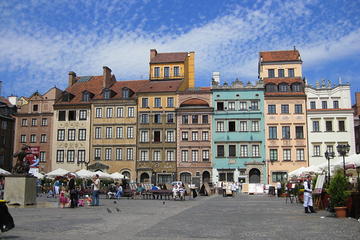 Warsaw Old Town Square Market
Warsaw Old Town Square Market The Old Town Square Market - or Rynek Starego Miasta - is the oldest part of Warsaw, originally constructed in the late 13th century. After being destroyed by the German army, it was restored after World War II to its beautiful prewar charm, lined with 17th and 18th c
Warsaw Old Town Square Market
Warsaw Old Town Square Market The Old Town Square Market - or Rynek Starego Miasta - is the oldest part of Warsaw, originally constructed in the late 13th century. After being destroyed by the German army, it was restored after World War II to its beautiful prewar charm, lined with 17th and 18th c
-
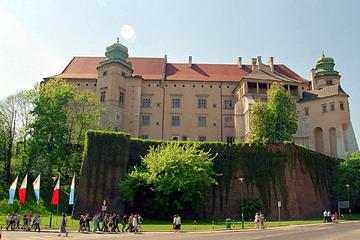 Wawel Hill
Wawel Hill The very symbol of the nation, the hilltop Wawel, pronounced vah-vel; is more steeped in Polish history than any other place in the country. It was the seat of the kings for over 500 years from the early days of the Polish state, and even after the centre of power moved to Warsaw in the
Wawel Hill
Wawel Hill The very symbol of the nation, the hilltop Wawel, pronounced vah-vel; is more steeped in Polish history than any other place in the country. It was the seat of the kings for over 500 years from the early days of the Polish state, and even after the centre of power moved to Warsaw in the
-
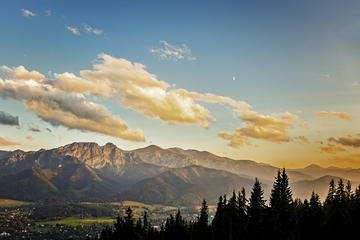 Mt Gubalówka
Mt Gubalówka Mt Gubalowka is a mountain above the town of Zakopane in southern Poland. It is one of the most popular tourist attractions in the region, offering amazing views of the Tatras Mountains and a variety of outdoor activities throughout the year. The best way to reach the top is by the fu
Mt Gubalówka
Mt Gubalówka Mt Gubalowka is a mountain above the town of Zakopane in southern Poland. It is one of the most popular tourist attractions in the region, offering amazing views of the Tatras Mountains and a variety of outdoor activities throughout the year. The best way to reach the top is by the fu
-
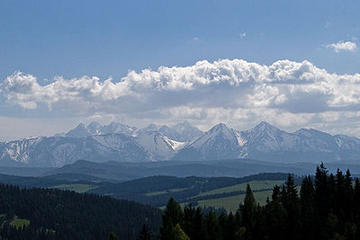 Tatra Mountains
Tatra Mountains The Tatra Mountains are the highest part of the Carpathian range and Polands southernmost border. Today they are shared with Slovakia, but in the past it was Hungary and the dreaded Ottoman empire who frequently threatened to invade Poland. The mountains cover 300 sq miles (785 sq
Tatra Mountains
Tatra Mountains The Tatra Mountains are the highest part of the Carpathian range and Polands southernmost border. Today they are shared with Slovakia, but in the past it was Hungary and the dreaded Ottoman empire who frequently threatened to invade Poland. The mountains cover 300 sq miles (785 sq
-
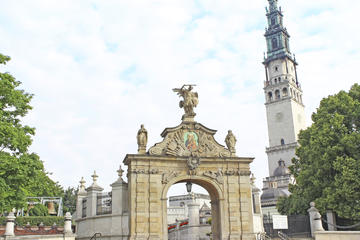 Czestochowa
Czestochowa Sitting on the Warta River in southern Poland, Czestochowa is home to the 14th-century Jasna Gora Monastery, which attracts thousands of pilgrims from all over the world each year. The monastery is home to the Black Madonna painting, a shrine to the Virgin Mary that is credited with ma
Czestochowa
Czestochowa Sitting on the Warta River in southern Poland, Czestochowa is home to the 14th-century Jasna Gora Monastery, which attracts thousands of pilgrims from all over the world each year. The monastery is home to the Black Madonna painting, a shrine to the Virgin Mary that is credited with ma
-
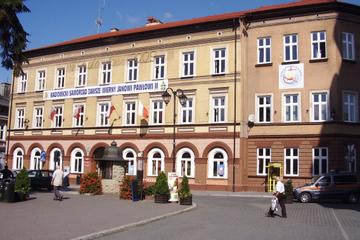 Wadowice
Wadowice A small town in southern Poland, Wadowice is best known as the birthplace of Pope John Paul II. The town has been the site of ermanent settlement since the 10th or 11th century and was once a regional center of crafts and trade. Today its primary industry is tourism, attracting 200,000 vi
Wadowice
Wadowice A small town in southern Poland, Wadowice is best known as the birthplace of Pope John Paul II. The town has been the site of ermanent settlement since the 10th or 11th century and was once a regional center of crafts and trade. Today its primary industry is tourism, attracting 200,000 vi
-
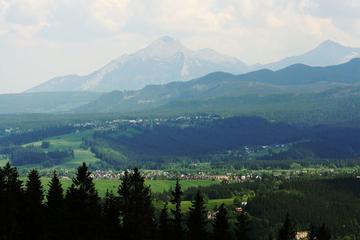 Zakopane
Zakopane Zakopane is a small town located in southern Poland at the foot of the Tatras Mountains near the border with Slovakia. Known as the winter capital of Poland, it is a popular tourist destination for skiing, snowboarding and ski jumping. Nearby ski resorts include Mount Gubalowka, Kasprowy
Zakopane
Zakopane Zakopane is a small town located in southern Poland at the foot of the Tatras Mountains near the border with Slovakia. Known as the winter capital of Poland, it is a popular tourist destination for skiing, snowboarding and ski jumping. Nearby ski resorts include Mount Gubalowka, Kasprowy
-
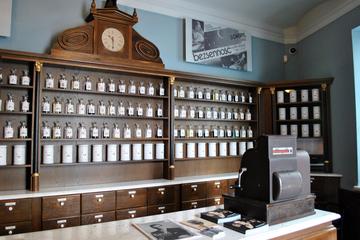 Ghetto Eagle Pharmacy Museum
Ghetto Eagle Pharmacy Museum Tadeusz Pankiewicz’s pharmacy in the heart of Podgórze ran quite smoothly until 1941 when the Nazis closed off the surrounding area and created a ghetto for the Jewish community. And although Pankiewicz was offered to move the Aryan side of the city at the time, he cho
Ghetto Eagle Pharmacy Museum
Ghetto Eagle Pharmacy Museum Tadeusz Pankiewicz’s pharmacy in the heart of Podgórze ran quite smoothly until 1941 when the Nazis closed off the surrounding area and created a ghetto for the Jewish community. And although Pankiewicz was offered to move the Aryan side of the city at the time, he cho
-
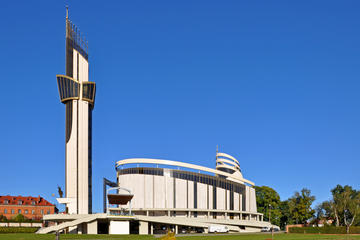 Sanctuary of Divine Mercy
Sanctuary of Divine Mercy The Sanctuary of Divine Mercy is a church located on the outskirts of Krakow, Poland. The church was consecrated in 1891 and dedicated to St. Joseph. It was originally built as part of the convent of the Sisters of Our Lady of Mercy. This church is home to the tomb of St.
Sanctuary of Divine Mercy
Sanctuary of Divine Mercy The Sanctuary of Divine Mercy is a church located on the outskirts of Krakow, Poland. The church was consecrated in 1891 and dedicated to St. Joseph. It was originally built as part of the convent of the Sisters of Our Lady of Mercy. This church is home to the tomb of St.
-
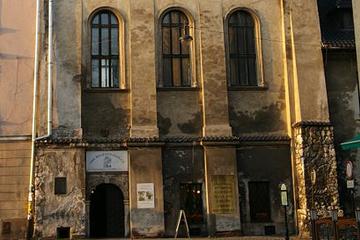 Kazimierz (Jewish District)
Kazimierz (Jewish District) Kazimierz - or Jewish District - was for a long time an independent town with its own municipal charter and laws. Its colorful history was determined by its mixed Jewish-Polish population, and though the ethnic structure is now wholly different, the architecture gives a
Kazimierz (Jewish District)
Kazimierz (Jewish District) Kazimierz - or Jewish District - was for a long time an independent town with its own municipal charter and laws. Its colorful history was determined by its mixed Jewish-Polish population, and though the ethnic structure is now wholly different, the architecture gives a
-
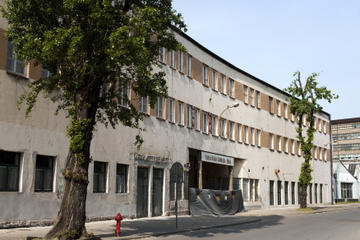 Oskar Schindlers Factory
Oskar Schindlers Factory Oskar Schindler was a wealthy German Nazi who employed hundreds of Jews in his Krakow enamel factory, which ultimately led to many saved lives. Despite Schindler’s political affiliations, he insisted that his employees were vital to the workforce. Many of his workers were
Oskar Schindlers Factory
Oskar Schindlers Factory Oskar Schindler was a wealthy German Nazi who employed hundreds of Jews in his Krakow enamel factory, which ultimately led to many saved lives. Despite Schindler’s political affiliations, he insisted that his employees were vital to the workforce. Many of his workers were
-
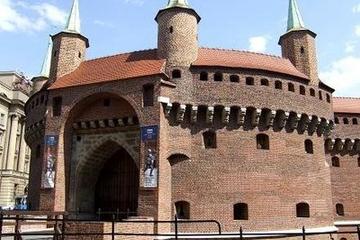 Great Barbican
Great Barbican In 1499 Krakow was a wealthy city under constant threat of attack, especially from the rampaging Ottomans. So they made themselves into a fortress. The Great Barbican is both the principal entry point to the city and a massive seven turreted point of defense. These days it looks lik
Great Barbican
Great Barbican In 1499 Krakow was a wealthy city under constant threat of attack, especially from the rampaging Ottomans. So they made themselves into a fortress. The Great Barbican is both the principal entry point to the city and a massive seven turreted point of defense. These days it looks lik
-
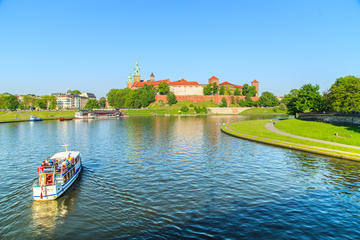 Vistula River
Vistula River The River Vistula (Wisła in Polish) is the longest and most important river in Poland, running 1,047 km (654.5 miles) from its source as a stream on the slopes of Borania Góra, the second-tallest mountain in the Silesian Beskids. On its journey northwards, the river flows through the
Vistula River
Vistula River The River Vistula (Wisła in Polish) is the longest and most important river in Poland, running 1,047 km (654.5 miles) from its source as a stream on the slopes of Borania Góra, the second-tallest mountain in the Silesian Beskids. On its journey northwards, the river flows through the
-
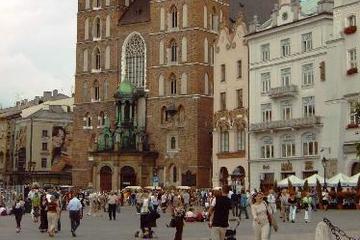 Rynek Glowny (Main Market Square)
Rynek Glowny (Main Market Square) Measuring 650 ft x 650 ft (200m by 200m), Krakóws Rynek Główny is the largest medieval town square in Europe and one of the finest urban designs of its kind. It s layout, based on that of a castrum (Roman military camp), was drawn up in 1257 and has been retained
Rynek Glowny (Main Market Square)
Rynek Glowny (Main Market Square) Measuring 650 ft x 650 ft (200m by 200m), Krakóws Rynek Główny is the largest medieval town square in Europe and one of the finest urban designs of its kind. It s layout, based on that of a castrum (Roman military camp), was drawn up in 1257 and has been retained
-
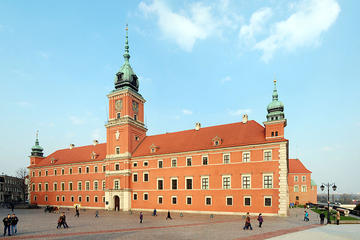 Warsaw Royal Castle (Zamek Krolewski)
Warsaw Royal Castle (Zamek Krolewski) Built in the beginning of the 17th century, the Royal Castle of Warsaw - or Zamek Krolewski - marks the entrance to Old Town, and was the official seat of the Polish monarchy up until the beginning of the 19th century, and also housed the Polish Parliament thr
Warsaw Royal Castle (Zamek Krolewski)
Warsaw Royal Castle (Zamek Krolewski) Built in the beginning of the 17th century, the Royal Castle of Warsaw - or Zamek Krolewski - marks the entrance to Old Town, and was the official seat of the Polish monarchy up until the beginning of the 19th century, and also housed the Polish Parliament thr
Total
657 -travel
FirstPage PreviousPage NextPage LastPage CurrentPage:
3/33 20-travel/Page GoTo Page:
 Krakow Old Town
Krakow Old Town The cobblestone Main Square (Rynek Główny) of Krakow Old Town is Central Europe’s largest and has been the center of the city’s social, religious and political life since the Middle Ages. Today it still serves as Krakow’s modern pulse, dominated by the splendid Renaissance arcades
Krakow Old Town
Krakow Old Town The cobblestone Main Square (Rynek Główny) of Krakow Old Town is Central Europe’s largest and has been the center of the city’s social, religious and political life since the Middle Ages. Today it still serves as Krakow’s modern pulse, dominated by the splendid Renaissance arcades
 Nowa Huta
Nowa Huta Communist repression came to Poland in 1945 after the end of World War II and lasted until the collapse of the Iron Curtain in 1989. During this time, the suburb of Nowa Huta was constructed six miles (10 kilometers) east of Krakow’s center.Nowa Huta could not be more different from fair
Nowa Huta
Nowa Huta Communist repression came to Poland in 1945 after the end of World War II and lasted until the collapse of the Iron Curtain in 1989. During this time, the suburb of Nowa Huta was constructed six miles (10 kilometers) east of Krakow’s center.Nowa Huta could not be more different from fair
 Pieskowa Skala Castle
Pieskowa Skala Castle One of only three castles in Poland that remain completely intact, the Renaissance Pieskowa Skała is on the Eagles’ Nest Trail, a scenic route that wends past medieval castles and watchtowers built as defense strongholds between Częstochowa and Krakow in Malopolska. Located i
Pieskowa Skala Castle
Pieskowa Skala Castle One of only three castles in Poland that remain completely intact, the Renaissance Pieskowa Skała is on the Eagles’ Nest Trail, a scenic route that wends past medieval castles and watchtowers built as defense strongholds between Częstochowa and Krakow in Malopolska. Located i
 The Royal Way in Warsaw
The Royal Way in Warsaw Originally used as a communication route, Warsaws famous Royal Way (or Royal Route) is a beautiful, 2.5 mile-(4 km) long road that goes from the The Royal Palace at Old Town to the Wilanow Palace. Walking this road assures you an incredible view of Polish historical landmar
The Royal Way in Warsaw
The Royal Way in Warsaw Originally used as a communication route, Warsaws famous Royal Way (or Royal Route) is a beautiful, 2.5 mile-(4 km) long road that goes from the The Royal Palace at Old Town to the Wilanow Palace. Walking this road assures you an incredible view of Polish historical landmar
 St Johns Cathedral (Katedra Sw Jana)
St Johns Cathedral (Katedra Sw Jana) This stunning Gothic cathedral in the heart of Warsaws Old Town is one of the most interesting historical landmarks. Built in the 14th century, St Johns Cathedral - or Katedra Sw Jana - is one of the oldest churches in all of Poland, but was completely destroye
St Johns Cathedral (Katedra Sw Jana)
St Johns Cathedral (Katedra Sw Jana) This stunning Gothic cathedral in the heart of Warsaws Old Town is one of the most interesting historical landmarks. Built in the 14th century, St Johns Cathedral - or Katedra Sw Jana - is one of the oldest churches in all of Poland, but was completely destroye
 Warsaw Old Town Square Market
Warsaw Old Town Square Market The Old Town Square Market - or Rynek Starego Miasta - is the oldest part of Warsaw, originally constructed in the late 13th century. After being destroyed by the German army, it was restored after World War II to its beautiful prewar charm, lined with 17th and 18th c
Warsaw Old Town Square Market
Warsaw Old Town Square Market The Old Town Square Market - or Rynek Starego Miasta - is the oldest part of Warsaw, originally constructed in the late 13th century. After being destroyed by the German army, it was restored after World War II to its beautiful prewar charm, lined with 17th and 18th c
 Wawel Hill
Wawel Hill The very symbol of the nation, the hilltop Wawel, pronounced vah-vel; is more steeped in Polish history than any other place in the country. It was the seat of the kings for over 500 years from the early days of the Polish state, and even after the centre of power moved to Warsaw in the
Wawel Hill
Wawel Hill The very symbol of the nation, the hilltop Wawel, pronounced vah-vel; is more steeped in Polish history than any other place in the country. It was the seat of the kings for over 500 years from the early days of the Polish state, and even after the centre of power moved to Warsaw in the
 Mt Gubalówka
Mt Gubalówka Mt Gubalowka is a mountain above the town of Zakopane in southern Poland. It is one of the most popular tourist attractions in the region, offering amazing views of the Tatras Mountains and a variety of outdoor activities throughout the year. The best way to reach the top is by the fu
Mt Gubalówka
Mt Gubalówka Mt Gubalowka is a mountain above the town of Zakopane in southern Poland. It is one of the most popular tourist attractions in the region, offering amazing views of the Tatras Mountains and a variety of outdoor activities throughout the year. The best way to reach the top is by the fu
 Tatra Mountains
Tatra Mountains The Tatra Mountains are the highest part of the Carpathian range and Polands southernmost border. Today they are shared with Slovakia, but in the past it was Hungary and the dreaded Ottoman empire who frequently threatened to invade Poland. The mountains cover 300 sq miles (785 sq
Tatra Mountains
Tatra Mountains The Tatra Mountains are the highest part of the Carpathian range and Polands southernmost border. Today they are shared with Slovakia, but in the past it was Hungary and the dreaded Ottoman empire who frequently threatened to invade Poland. The mountains cover 300 sq miles (785 sq
 Czestochowa
Czestochowa Sitting on the Warta River in southern Poland, Czestochowa is home to the 14th-century Jasna Gora Monastery, which attracts thousands of pilgrims from all over the world each year. The monastery is home to the Black Madonna painting, a shrine to the Virgin Mary that is credited with ma
Czestochowa
Czestochowa Sitting on the Warta River in southern Poland, Czestochowa is home to the 14th-century Jasna Gora Monastery, which attracts thousands of pilgrims from all over the world each year. The monastery is home to the Black Madonna painting, a shrine to the Virgin Mary that is credited with ma
 Wadowice
Wadowice A small town in southern Poland, Wadowice is best known as the birthplace of Pope John Paul II. The town has been the site of ermanent settlement since the 10th or 11th century and was once a regional center of crafts and trade. Today its primary industry is tourism, attracting 200,000 vi
Wadowice
Wadowice A small town in southern Poland, Wadowice is best known as the birthplace of Pope John Paul II. The town has been the site of ermanent settlement since the 10th or 11th century and was once a regional center of crafts and trade. Today its primary industry is tourism, attracting 200,000 vi
 Zakopane
Zakopane Zakopane is a small town located in southern Poland at the foot of the Tatras Mountains near the border with Slovakia. Known as the winter capital of Poland, it is a popular tourist destination for skiing, snowboarding and ski jumping. Nearby ski resorts include Mount Gubalowka, Kasprowy
Zakopane
Zakopane Zakopane is a small town located in southern Poland at the foot of the Tatras Mountains near the border with Slovakia. Known as the winter capital of Poland, it is a popular tourist destination for skiing, snowboarding and ski jumping. Nearby ski resorts include Mount Gubalowka, Kasprowy
 Ghetto Eagle Pharmacy Museum
Ghetto Eagle Pharmacy Museum Tadeusz Pankiewicz’s pharmacy in the heart of Podgórze ran quite smoothly until 1941 when the Nazis closed off the surrounding area and created a ghetto for the Jewish community. And although Pankiewicz was offered to move the Aryan side of the city at the time, he cho
Ghetto Eagle Pharmacy Museum
Ghetto Eagle Pharmacy Museum Tadeusz Pankiewicz’s pharmacy in the heart of Podgórze ran quite smoothly until 1941 when the Nazis closed off the surrounding area and created a ghetto for the Jewish community. And although Pankiewicz was offered to move the Aryan side of the city at the time, he cho
 Sanctuary of Divine Mercy
Sanctuary of Divine Mercy The Sanctuary of Divine Mercy is a church located on the outskirts of Krakow, Poland. The church was consecrated in 1891 and dedicated to St. Joseph. It was originally built as part of the convent of the Sisters of Our Lady of Mercy. This church is home to the tomb of St.
Sanctuary of Divine Mercy
Sanctuary of Divine Mercy The Sanctuary of Divine Mercy is a church located on the outskirts of Krakow, Poland. The church was consecrated in 1891 and dedicated to St. Joseph. It was originally built as part of the convent of the Sisters of Our Lady of Mercy. This church is home to the tomb of St.
 Kazimierz (Jewish District)
Kazimierz (Jewish District) Kazimierz - or Jewish District - was for a long time an independent town with its own municipal charter and laws. Its colorful history was determined by its mixed Jewish-Polish population, and though the ethnic structure is now wholly different, the architecture gives a
Kazimierz (Jewish District)
Kazimierz (Jewish District) Kazimierz - or Jewish District - was for a long time an independent town with its own municipal charter and laws. Its colorful history was determined by its mixed Jewish-Polish population, and though the ethnic structure is now wholly different, the architecture gives a
 Oskar Schindlers Factory
Oskar Schindlers Factory Oskar Schindler was a wealthy German Nazi who employed hundreds of Jews in his Krakow enamel factory, which ultimately led to many saved lives. Despite Schindler’s political affiliations, he insisted that his employees were vital to the workforce. Many of his workers were
Oskar Schindlers Factory
Oskar Schindlers Factory Oskar Schindler was a wealthy German Nazi who employed hundreds of Jews in his Krakow enamel factory, which ultimately led to many saved lives. Despite Schindler’s political affiliations, he insisted that his employees were vital to the workforce. Many of his workers were
 Great Barbican
Great Barbican In 1499 Krakow was a wealthy city under constant threat of attack, especially from the rampaging Ottomans. So they made themselves into a fortress. The Great Barbican is both the principal entry point to the city and a massive seven turreted point of defense. These days it looks lik
Great Barbican
Great Barbican In 1499 Krakow was a wealthy city under constant threat of attack, especially from the rampaging Ottomans. So they made themselves into a fortress. The Great Barbican is both the principal entry point to the city and a massive seven turreted point of defense. These days it looks lik
 Vistula River
Vistula River The River Vistula (Wisła in Polish) is the longest and most important river in Poland, running 1,047 km (654.5 miles) from its source as a stream on the slopes of Borania Góra, the second-tallest mountain in the Silesian Beskids. On its journey northwards, the river flows through the
Vistula River
Vistula River The River Vistula (Wisła in Polish) is the longest and most important river in Poland, running 1,047 km (654.5 miles) from its source as a stream on the slopes of Borania Góra, the second-tallest mountain in the Silesian Beskids. On its journey northwards, the river flows through the
 Rynek Glowny (Main Market Square)
Rynek Glowny (Main Market Square) Measuring 650 ft x 650 ft (200m by 200m), Krakóws Rynek Główny is the largest medieval town square in Europe and one of the finest urban designs of its kind. It s layout, based on that of a castrum (Roman military camp), was drawn up in 1257 and has been retained
Rynek Glowny (Main Market Square)
Rynek Glowny (Main Market Square) Measuring 650 ft x 650 ft (200m by 200m), Krakóws Rynek Główny is the largest medieval town square in Europe and one of the finest urban designs of its kind. It s layout, based on that of a castrum (Roman military camp), was drawn up in 1257 and has been retained
 Warsaw Royal Castle (Zamek Krolewski)
Warsaw Royal Castle (Zamek Krolewski) Built in the beginning of the 17th century, the Royal Castle of Warsaw - or Zamek Krolewski - marks the entrance to Old Town, and was the official seat of the Polish monarchy up until the beginning of the 19th century, and also housed the Polish Parliament thr
Warsaw Royal Castle (Zamek Krolewski)
Warsaw Royal Castle (Zamek Krolewski) Built in the beginning of the 17th century, the Royal Castle of Warsaw - or Zamek Krolewski - marks the entrance to Old Town, and was the official seat of the Polish monarchy up until the beginning of the 19th century, and also housed the Polish Parliament thr